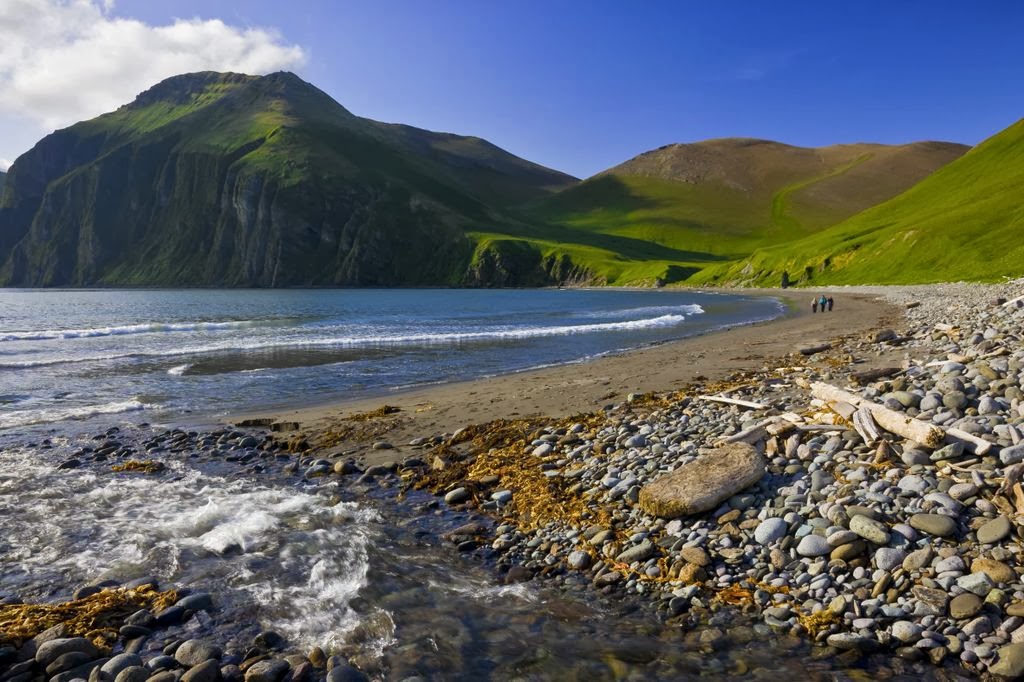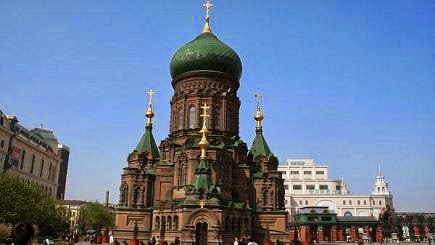Aomori City is located in Aomori Prefecture in the north of Japan. From Tokyo, you can travel by plane or train. Take the JR Tohoku shinkansen from Tokyo to Hachinohe, then transfer to a limited express for Aomori. Total travel time is about 4 hours. That description of Aomori is proving to be incredibly accurate. After a very wet winter & a rainy spring, the trees and forests all around Aomori prefecture are incredibly lush and green. There are two things in Aomori that are absolutely worth seeing, though. First, and near the station in a rather splendid modern building, is the Nebuta museum, host to some of the giant illuminated floats that parade through the city during this annual festival. Aomori-ken sits at the very top of Honshu. Getting there on the train is as easy as you could hope: Shin-Aomori is the current terminus of the Tohoku Shinkansen, so you can leap on a Hayate service from Tokyo or, like me, catch it from Morioka, where the Akita mini-shinkansen line meets the Tohoku service (Morioka, incidentally, seems like a rather pretty little city with some nice gardens and the remains of a castle).
Iwaki Mountain behind the Aomori city
Aomori JR Station
The train covers quite a distance from Morioka to Aomori, but with very few stops it's quick. Like many towns that get linked to the Shinkansen, Aomori has an older station (called, well, Aomori) and the new Shinkansen one (Shin Aomori) outside the town. At Shin Aomori you will find every conceivable type of car rental depot and just about nothing else, so your best bet is to jump on the Ou Main Line service to Aomori (a couple of minutes) or Hirosaki (quite a long way – be sure to get an express, or it'll take forever). They are huge and absolutely stunning. Secondly, Aomori is the major link on Honshu with Hokkaido to the north, and the traffic back and forth used to travel on huge rail-ferries such as the Hakkoda-Maru. Now the ships have been replaced by a tunnel, and soon the Shinkansen will go through directly, further relegating Aomori's importance.
The Aomori Prefecture Museum
In the tracks of the ruins, there are groups of housing, warehouses,
the symbolic 3 story Horitate pillared buildings replicates.
There are museums as well.
Sannai Maruyama Ruins
In the Sannaimaruyama ruins, the most focused is the “6 pillared building”.
The building size of the open space between the pillars, the width, and the depth,
all are unified into 4.2 meters, 2 meters, and 2 meters.
The Hakkoda-Maru, though, has been preserved as a museum: inside you can wander through the bridge and accommodation, and boggle at the deck that held three complete trains per journey. The atmosphere is actually quite overwhelming, especially when you see the ship's crew filmed before its final voyage – there's a real sense of an important part of the community ending up out of time and passing on.
The northernmost prefecture on Honshuisland, Aomori is endowed with abundant nature,including the well-known Mt. Hakkoda, Lake Towada, a large dualcrater lake surrounded by beech forest with wild animals, and Oirase Stream, astriking mountain stream with over a dozen waterfalls. Also, theShirakami-Sanchi (Shirakami Mountains), a World Natural Heritage site, isspread across 130,000 hectares on the border between Aomori and Akitaprefectures. Facing both the JapanSea and the Pacific Ocean, Aomori is blessed withvarious seafood which never fails to draw gourmands. Its most popularattraction is the Nebuta Festival, which brings in about 3 million visitorseach year.
For history enthusiasts, the Sannai-Maruyama Ruins – the largestarcheological site of the Jomon Period (about 10,500-300 BC) – is a recommendeddestination. Aomori has a number of tourist spots,including outstanding natural sites such as Mt. Hakkoda and Lake Towada. Roadsfor buses and cars, as well as climbing routes and paths have been improved inrecent years. Mountain cable cars are built so that children and the elderlycan explore them too. However, note that it is a heavy snowfall area and youneed to wear suitable winter clothing.
The capital of the prefecture of the same name, Aomori is a modern city, with active shipping and fishing industry. It is a good access point for visitors to the Tsugaru Peninsula, Shimokita Peninsula, and Lake Towada. One of the popular attractions in this area is Nebuta Matsuri or Nebuta Festival, which is held from August 2 to 7 each year. Another recommended spot is the Aomori Prefectural Folklore Museum.
Nebuta Festival
Nebuta Festivals are celebrated inseveral northern regions, mainly in Aomori prefecture. The Aomori NebutaFestival, which is celebrated annually from August 2-7, is the most recognised.Over 20 gigantic three-dimensional Nebuta (papier-mache dolls) depict ancientwarriors, legendary creatures or Kabuki characters that illuminate the nightwith bright colours. Today, the Nebuta floats are made of a wood base,carefully covered with Japanese paper and lit from the inside with hundreds oflight bulbs. Quite a few spirited dancers (called “haneto”) in nativeNebuta costumes, surround the floats and dance to the tune of flutes andbeating of drums. For those who missed the Aomori NebutaFestival, there is an exhibition hall, Neputa No Yakata, that displays threefloats all year around in Goshogawara city. Situated 25km west of Aomori city,Goshogawara is another site of the Nebuta Festival – this one is called “Neputa.”It is said that the name came from the local direct “neputai,” whichliterally means “sleepy,” and the festival itself is a”sleepless festival” that prays for safety and a good harvest.
The 3 displayed Neputa, at 22m high andweighing of 16 tons, will be moved for 1.5km around the city from August 4-8.There is also a studio where visitors can see the work in progress and have ahands-on experience.
In Hirosaki city, a central part of Tsugaru district, crowd-pleasing events include the Hirosaki Neputa Festival(characterised by 60 small and large fan-shaped floats) and Hirosaki CherryBlossom Festival. Throughout the year, there are several flower festivals heldin different cities throughout Aomori. Nebuta no Sato is a comprehensive facility that provides information about Nebuta festival, the fire festival representing Aomori. Special floats made of paper, in the shape of fan, dolls or animals, majestically march in Nebuta festival. Fantastic Nebuta festival is held once every year in August. This is the place to see Nebuta if you missed the festival. Nebuta no Sato holds Nebuta marching show every day so that visitors can experience the punch and dynamism of Nebuta. Nebuta hall exhibits eight big Nebuta and one Hirosaki Nebuta. Nebuta-no-Sato also has a park called Wanpaku square where kids can play with a variety of equipment freely. Beetles and stag beetles are found in the park, which are quite rare in these days. In addition to knowing more about Nebuta, visitors could also enjoy the nature in the park.
The Mostfamous Onsen and delight in Aomori
There are a number of onsen (hot springs)with good reputation and high spring quality in Aomori. Koganesaki Furofushi Onsen is one of the most popular and is often featured in magazines and TV programs. Its name “furofushi” means “immortality” in Japanese. Bathers can see the wild waves of the Japan Sea while soaking in their outdoor spa, with a view of the distant horizon and a splendid sunset.For more information about the onsen. Enjoying local delicacies is a must during your journey. Aomori is known for its abundance and high quality seafood. Ohma tuna, one of the best grade tunas, is caught at Ohma Port facingthe Tsugaru Strait that connects the Japan Sea with the Pacific Ocean. These tunas feed on fresh Pacific sauries, sardines and squids, and are sold almost exclusively to high-end sushi restaurants. Other seafood like squids and scallops caught in adjacent sea are also tasty.
Aomori Prefecture is Japan’s largestapple producer – there are approximately 60 kinds of apple varieties, thanks toits significant difference in temperature and improved cultivation methods,which are shipped seasonally. You can try apple picking in several farms, butthere is a charge.
Aomori boasts the largest share of apple production in Japan. The famous Fuji apples were first planted in the prefecture. There are a number of hot springs, where you can relax and enjoy beautiful nature even in winter. Oirase Keiryu in Towada city is a famous river for its majestic waterfalls. There is a four-hour trekking route alongside the river, where visitors can immerse themselves in beautiful landscapes featuring trees, rocks, cliffs, and many more nature beauties. In summer, many people come to Aomori to see those beautiful floats parade during Nebuta Festival.
Here we end our trip with at the Sannaimaruyama ruins. In Akita/Aomori, most of the facilities are in business as usual however, people there were saying that “those visiting have decreased about half”. In Akita or Aomori there is no fear of the nuclear radiation at all.









































.jpg)
